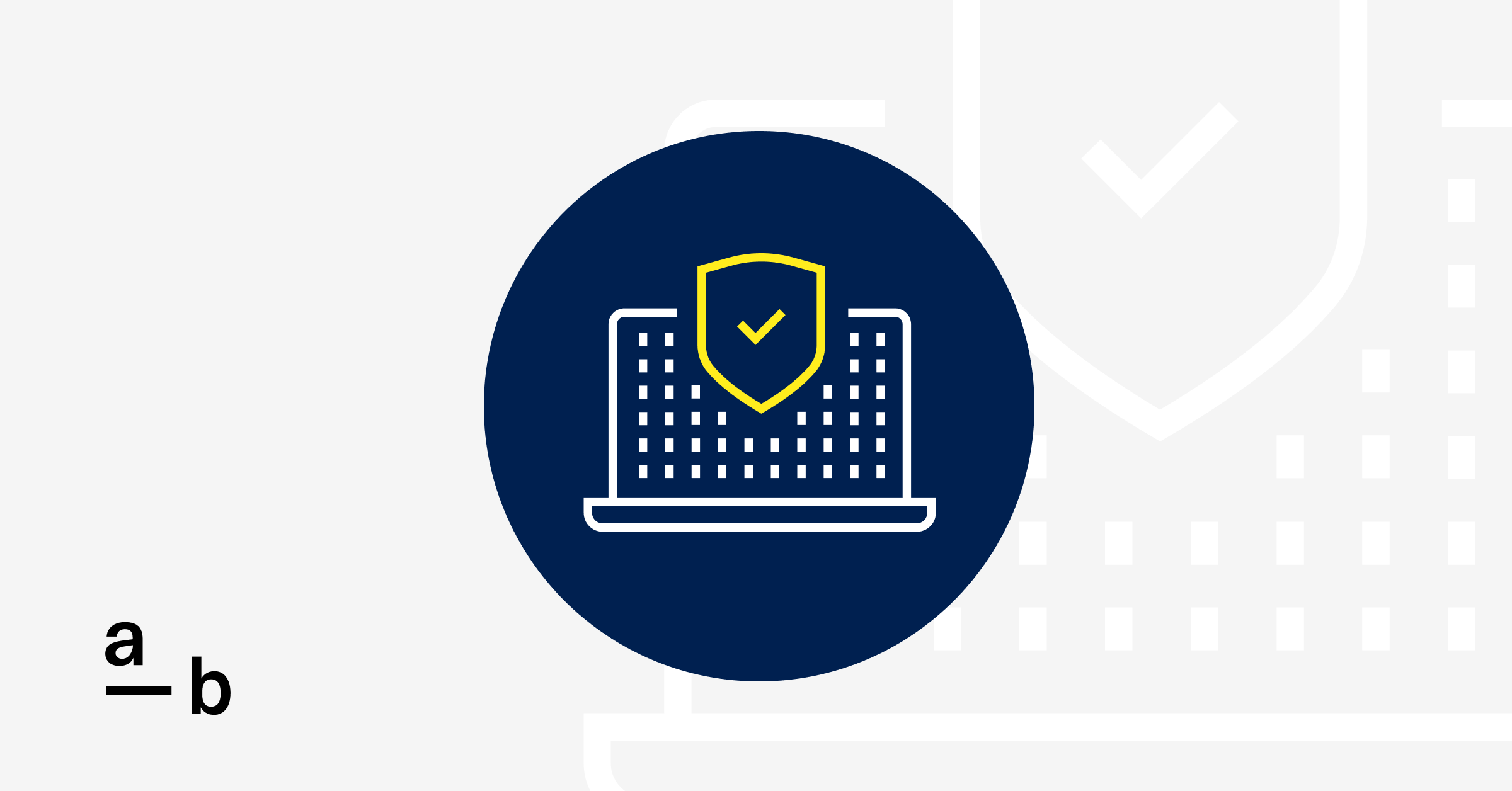Article
Protect Your Business From Financial Fraud With Cyber Insurance
Financial fraud is a source of increasing losses for U.S. businesses
The threat of financial fraud looms large for businesses of all sizes.
In fact, approximately 2.6 million acts of financial fraud were reported to the Federal Trade Commission in 2023, totaling $10 billion in total fraud losses. This is $1 billion higher than the prior year despite the number of instances holding relatively steady (2.5 million acts of financial fraud were reported in 2022), demonstrating that these attacks are leading to increasing losses.
Financial fraud can take many forms: credit card fraud, ACH and bank fraud, identity theft, invoice manipulation, investment scams — the list goes on. The insurance industry has taken note, with many insurance companies offering coverage for financial fraud in cyber policies.
As criminal activity continues to evolve, it’s crucial for businesses to educate themselves on the risks and warning signs, and safeguard themselves with the right security services and cyber insurance coverage.
What is Financial Fraud?
Financial fraud pertains to scams and illegal activities aimed at obtaining an organization’s financial assets through fraudulent means. This can be done through a variety of methods. Traditionally, financial fraud included activities like embezzlement, check fraud, and Ponzi schemes that relied on physical documents and in-person interactions. Perpetrators would forge signatures, alter checks, or misappropriate funds through insider schemes.
However, increasing reliance on technology has given rise to sophisticated cyber and digital fraud schemes. Fraudsters use phishing, ransomware, and social engineering tactics to steal sensitive financial information, gain access to a victim’s bank account, and carry out fraudulent transactions.
These digital scams pose new challenges for businesses, allowing perpetrators to execute attacks rapidly and target a larger number of victims compared to traditional methods. It’s easier for cybercriminals to operate anonymously in the digital realm compared to face-to-face interactions, and these schemes often involve complex and technologically advanced tactics, meaning businesses need to deploy sophisticated cybersecurity measures to combat these threats.
Types of Financial Fraud
Digital financial fraud can take many forms, each with its own characteristics and methods. Some of the most common types of financial crimes include:
Social Engineering and Phishing
Social engineering refers to the use of psychological manipulation or misleading tactics to gain access to an organization’s sensitive information.
Phishing is a common form of social engineering in which cybercriminals impersonate trusted entities, such as a financial institution, payment processor, or popular online platform, in an attempt to trick victims into revealing personal information or login credentials. Scammers often send fake emails or create fraudulent websites that closely resemble legitimate ones, asking victims to provide their passwords, credit card details, or other sensitive information in order to commit identity theft or carry out unauthorized financial transactions. This can result in substantial monetary losses and significant reputational damage.
Computer Fraud
Computer fraud is another type of digital financial fraud schemes that involves unauthorized access to computer systems or manipulation of data for illicit financial gain. Fraudsters exploit weaknesses in an organization’s network — often through sophisticated techniques such as hacking into databases, planting malware, or exploiting security vulnerabilities in software or hardware — to gain unauthorized access to sensitive information or manipulate financial records.
Once fraudsters gain access to an organization’s network, they can carry out a wide range of fraudulent activities, including stealing funds from online banking accounts or altering financial records.
What Business Types Are Most Vulnerable to Financial Fraud?
Certain revenue sectors are at heightened risk of digital financial crimes — specifically, small businesses, which often lack robust cybersecurity measures and rely heavily on digital transactions. Cybercriminals tend to view small businesses as easy targets compared to their larger counterparts.
Additionally, businesses in certain industries are at higher risk of financial fraud attacks than others:
Financial services institutions face significant exposure to financial fraud due to the large volume of financial transactions they handle. Because organizations in the financial services sector are responsible for safeguarding sensitive financial information, they are therefore prime targets.
Healthcare organizations are especially vulnerable to financial crimes due to the high value of personal and financial information they possess. The healthcare industry continues to experience an alarming increase in data breaches and ransomware attacks, leading to financial losses and compromising patient privacy. For example, a Florida jury indicted a man in 2023 for his role in a $60 million health insurance fraud, wire transfer fraud, and kickback scheme that involved submitting fraudulent claims to Medicare.
E-commerce companies are constantly exposed to financial fraud as a result of their reliance on online transactions and the vast amount of customer payment data they handle. With the exponential growth of online shopping, cybercriminals are actively targeting e-commerce platforms to steal payment information or conduct fraudulent transactions.
Key Elements of Financial Fraud Insurance Coverage
Cyber insurance plays a pivotal role in mitigating the risks of digital financial crimes. Robust cyber coverage includes losses from fraudulent activities, cyber extortion, and data breaches; legal expenses; forensic investigations; and regulatory fines. Cyber insurance also offers coverage for business interruption losses resulting from cyberattacks, ensuring financial stability during challenging times.
Here are some key elements to look for when choosing a cyber insurance policy with financial fraud coverage:
- Financial Fraud/Social Engineering Coverage: This type of coverage protects businesses against financial loss due to fraudulent activities like phishing, social engineering, unauthorized wire transfers, etc. This coverage reimburses businesses for theft of funds or securities and tangible property through digital means up to the coverage limit.
- Invoice Manipulation Coverage: Invoice manipulation coverage typically pays for financial losses incurred due to fraudulent alterations or manipulations of invoices by cybercriminals. This type of coverage is designed to protect businesses from uncollectible invoices in scenarios where hackers gain unauthorized access to a company’s computer systems and tamper with invoices, such as changing payment details to divert funds to fraudulent accounts.
- Utility Fraud Coverage: Utility fraud coverage provides protection against unauthorized access to telecommunications systems that results in increased utility bill charges to the company.
- Cryptojacking Coverage: Cryptojacking coverage provides protection against cyberthreats such as crypto mining attacks that can seriously affect business operations. When a hacker gains access to an organization’s computer systems, they can use the processing power to mine cryptocurrencies which consumes the CPU resources of the machines, leading to financial loss such as increased electricity utility bills. With this coverage, the cyber insurance policy will cover overages charged by utility companies resulting from crypto mining schemes.
It’s important to remember that coverages can have different terms with different insurance providers. Make sure you work with your insurance agent or broker to determine how your coverage stacks up to your risk tolerance.
Protection from Financial Fraud Through At-Bay
By securing cyber insurance tailored to combat financial fraud, businesses of all sizes can fortify their defenses and mitigate the potential impact of fraudulent activities.
Cyber insurance policies placed through At-Bay stand out as a comprehensive and proactive solution for businesses seeking protection from financial fraud. With a focus on innovative underwriting, cutting-edge risk management, and proactive cybersecurity measures, At-Bay is the InsurSec provider for the digital age, keeping customers protected with comprehensive prevention and protection. At-Bay provides businesses with the agility and resilience needed to combat financial fraud effectively, along with access to security tools designed to address security risks including phishing, social engineering, and financial fraud.
Want to learn more about Cyber insurance from At-Bay? Talk to your authorized insurance representative to learn more about Cyber insurance provided by At-Bay.
Already an At-Bay broker and want to get a Cyber quote? It takes just minutes to complete the streamlined application on our Broker Platform.








